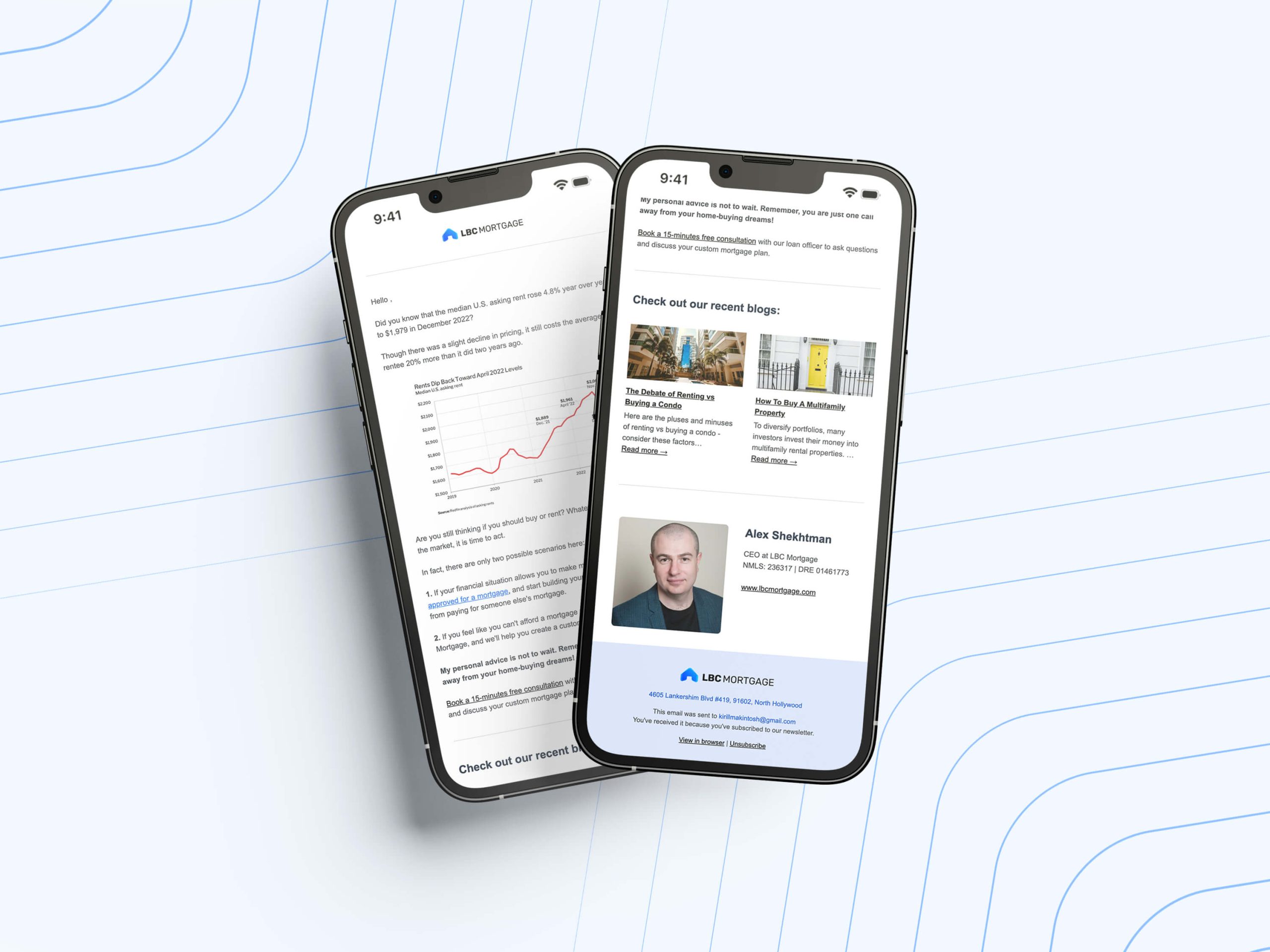Why You Might Refinance in California
When homeowners in California weigh the decision between refinancing their current loan or applying for a brand-new mortgage, the right choice depends on their financial goals and personal situation. Refinancing means replacing your existing mortgage with a new one—ideally with better terms. A new mortgage, on the other hand, is usually tied to the purchase of a new property or a significant shift in your housing plans.
At LBC Mortgage, we help homeowners evaluate these options with clarity. Whether you're trying to lower your monthly payments, access home equity, or move into a new home, we guide you through each step to ensure you make the most informed decision.
Interest Rates Are Lower Than Your Current Mortgage
One of the most common reasons to refinance is to take advantage of lower interest rates. If current rates are at least 0.5% to 0.75% lower than your existing rate, you may benefit from a refinance. A lower rate can significantly reduce your monthly payment and total interest paid over the life of the loan.
California homeowners who financed during a high-rate period may find today's rates more favorable. Refinancing in such cases could free up monthly cash flow or shorten the loan term without raising payments.
Changing Loan Terms or Structure
Refinancing gives you the flexibility to shift from an adjustable-rate mortgage (ARM) to a fixed-rate mortgage. Many California borrowers also choose to shorten their loan term from 30 years to 15 or 20 years. While this often increases the monthly payment, it reduces the total interest paid and helps you build equity faster.
You can also refinance to remove private mortgage insurance (PMI) if your home has gained enough value to push your equity past 20%.
Accessing Home Equity Through Cash-Out Refinance
If your home's value has increased, you may qualify for a cash-out refinance. This type of loan lets you borrow more than your current balance and receive the difference as cash. Many California homeowners use this strategy to renovate, consolidate debt, or invest in other financial goals.
A cash-out refinance typically comes with a higher interest rate than a rate-and-term refinance, but it can be a cost-effective way to access large amounts of capital.
Improved Financial or Credit Profile
If your credit score has gone up, your debt has decreased, or your income has increased, you may now qualify for better loan terms than when you originally financed. Lenders reward stronger financial profiles with lower interest rates and more favorable loan structures.
This is particularly useful in California, where higher loan amounts can amplify the benefits of even small rate improvements.
Planning to Stay Long-Term
Refinancing often involves closing costs, which can range from $3,000 to $5,000 in California depending on loan size and provider. If you plan to stay in your home long enough to recoup those costs through lower monthly payments, a refinance may be the right move.
When a New Mortgage Makes More Sense
Purchasing a New Home
If you are buying a new property rather than staying in your current home, you’ll need a new mortgage. This applies whether you're upsizing, downsizing, or relocating. In this case, refinancing your current loan doesn’t offer any benefits—you should focus on finding the best loan program for your new purchase.
Taking Advantage of Different Loan Programs
California offers many homebuyer assistance programs that are not available through refinancing. First-time buyers, veterans, and low- to moderate-income families may benefit from new mortgage options that include grants, down payment assistance, or reduced interest rates.
Some lenders also offer better pricing for purchase loans compared to cash-out refinances, especially in a market like California where loan amounts are higher.
Moving to a New Market or County
If you're relocating to a different part of California—or even out of state—your new mortgage can be tailored to the local market conditions. Property taxes, insurance rates, and housing regulations vary by county, so a new mortgage helps ensure your loan structure fits your new environment.
Avoiding Prepayment Penalties
Older mortgages or specialty loan products may include prepayment penalties. If paying off your current loan early would trigger fees, refinancing may not be the best choice. In those cases, moving and securing a new mortgage may be more financially sound.
Key Factors to Evaluate
Break-Even Analysis
To determine whether refinancing is worth it, calculate the break-even point. Divide your closing costs by your estimated monthly savings. If you plan to stay in your home beyond that point, refinancing makes financial sense.
For example, if you pay $4,000 in closing costs and save $200 a month, your break-even point is 20 months. Staying in the home longer than that results in net savings.
Equity Position
Lenders typically prefer that borrowers have at least 20% equity in their home when refinancing. A higher equity position not only helps remove PMI but also qualifies you for better loan terms. In high-appreciation markets across California, rising home values can help you meet this requirement sooner than expected.
Closing Costs and Fees
Refinancing costs include appraisal, underwriting, escrow, title insurance, and lender fees. These can total between 2% and 6% of the loan amount. It's important to understand these costs upfront and determine how long it will take to recover them through monthly savings.
At LBC Mortgage, we break down all costs clearly so there are no surprises.
Credit and Debt-to-Income Ratio
A higher credit score and lower debt-to-income ratio help you secure the best refinance rates. If your credit profile has weakened since your original loan, refinancing might come with a higher interest rate or additional conditions.
We work with borrowers across a range of credit situations and can recommend steps to strengthen your application before you refinance.
Expected Length of Stay
If you plan to sell your home within a few years, you may not save enough to justify refinancing. In that case, continuing with your current loan or exploring a different mortgage product may be the better option.
Special Considerations for California Homeowners
High Home Values and Loan Amounts
In California, home prices are significantly higher than the national average. This means even small interest rate changes can have a major impact on monthly payments. It also means that closing costs, calculated as a percentage of the loan, are typically higher in dollar terms.
Local and State Programs
California offers unique loan programs through agencies like CalHFA. These are often aimed at first-time buyers or those with moderate income. Some of these programs offer better terms when used for purchase loans rather than refinances.
Property Tax and Insurance Variations
Every county in California has its own tax rates and insurance requirements. These costs should be factored into any decision about refinancing versus taking out a new mortgage in a different location.
How LBC Mortgage Helps You Decide
At LBC Mortgage, we start by reviewing your current mortgage, credit profile, and long-term goals. We run a break-even analysis to determine if refinancing makes financial sense. We also compare it to the costs and benefits of securing a new mortgage, especially if you're considering a move.
Our goal is to help you make the most cost-effective decision, whether you're staying in your home or planning a change. We provide transparent estimates, explain all fees, and guide you toward the best loan option for your needs.





